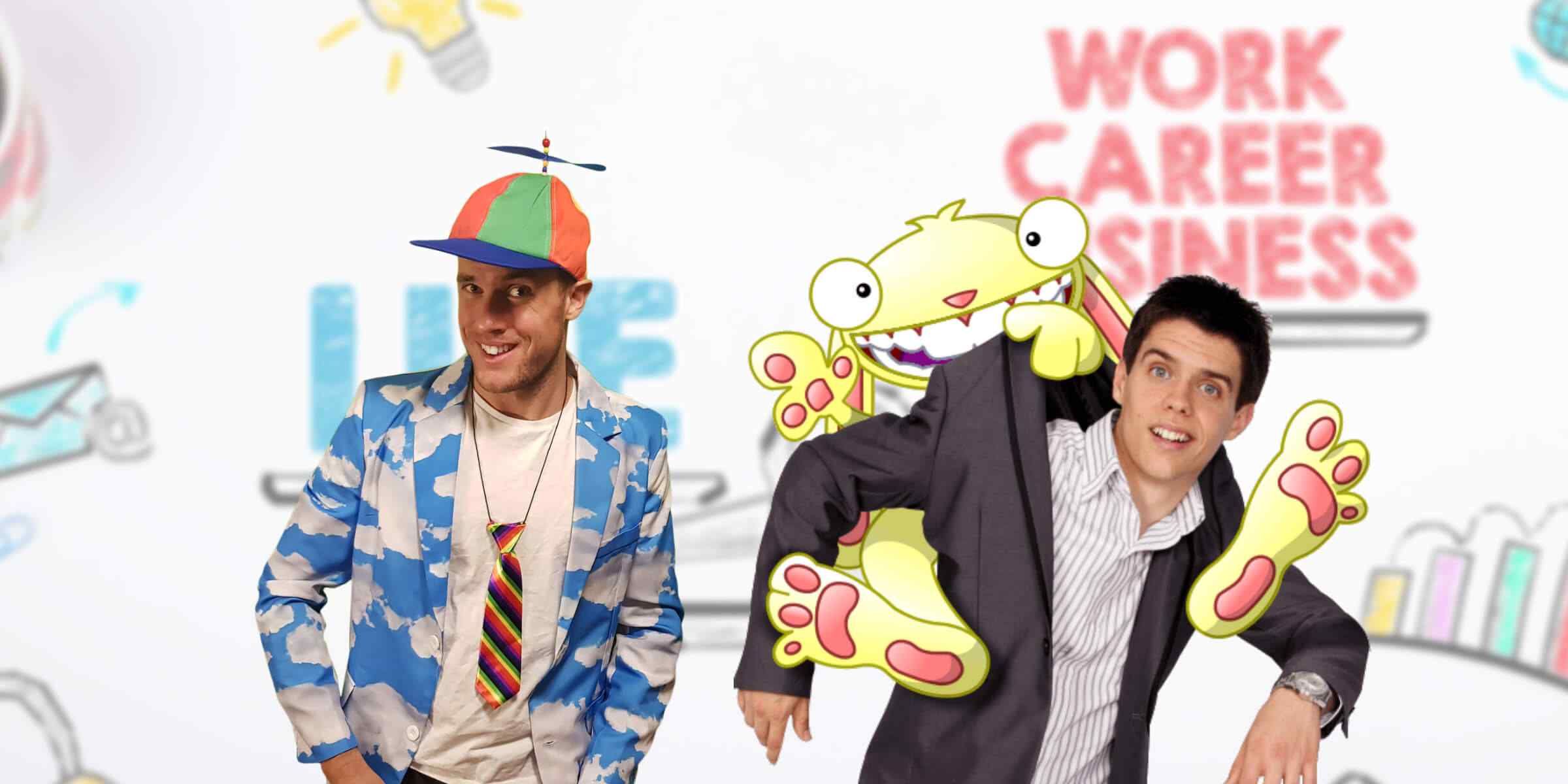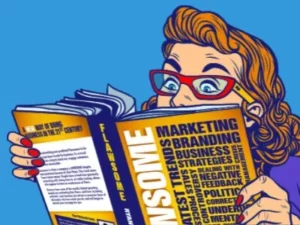One of the biggest struggles in business is having that work-life balance—seeing your family while ensuring your business succeeds. Ultimately, your business should be the growth and the vehicle to be able to have the experiences that you want in your personal life. World-renowned author and Younique Creation executive director Ryan McDonald-Smith shares a few different changes that he has gone through to allow him to achieve that and gives work-life balance tips and techniques.
Ryan McDonald-Smith

Ryan McDonald-Smith and his beautiful wife, Bec, started Younique Creation in Brisbane. A couple of years ago, they moved over 7 hrs Northwest onto a 2000+ acre cattle property for ‘tree’ change. With fewer distractions and less time spent going to and from meetings, they are able to focus more on their clients, improving their skills and adding greater value. Currently, Ryan is working on his second book called The Yesand and Yeahbut, which aims to inspire children to be more proactive.
The Best Way to Learn Is to Teach
Your first book was a pivotal change in the way that your business operates. What are the benefits of creating a book?
Ryan: I got the inspiration for writing a book when I went to a course by Dale Beaumont. Originally, his business was how to get published, and he had written about 20 books in the span of 12 months. He said that a book is a business card on steroids and helps you to be treated as an authority in something.
Speaker John D. Martini said that the best way to learn is to teach. For me, I did that through my first book: Flawsome. It was based on an article that I read in 2012 from Trendwatching.com about this marketing concept called Flawsome. It was predicted to be one of the top future trends for businesses.
Turn Your Flaws Into Marketing Gold!
Flaunt Your Flaws
Ryan: It resonated with me in so many ways. I spent about a year writing it, but for me, it’s the cornerstone of Younique Creation because going to business networking events, which is how I built most of my business, is through word of mouth and getting in front of people. Facebook was very new at the time. There weren’t content creators; there weren’t podcasts (or maybe there were, but not like there are today). The original content creators were the authors.
As this fresh-faced young marketing upstart, it was my way to get taken seriously. While some might say, ‘This is awesome.’ other people might say, ‘You’re too young, you don’t know what you’re talking about’ as soon as they see my clean-shaven baby face.
The truth is young people have something valuable that the older generation of business owners want, which is to stay up to date with modern trends. So this Flawsome came around for me at the right time because it was new and interesting, and it was something I could be an authority on. I wasn’t talking about being an authority on logo design when I had only really designed a handful of logos at that point. I had to pick something that no one else knew anything about, that they would respect a young person for. And it got me invited to business events where I was up there speaking for 60-90 minutes. Everyone wants to hear everything I know about branding and marketing.
The Tree Change
Ryan: The book led to this opportunity in the US. I had been working with a US client and they offered me a position over there. We had the flight booked. It felt through right at the last minute.
The opportunity in America means we’re going to uproot our lives and completely abandon all the current business. I was going to be working for a company, which I wanted to do for the adventure, for the experience, and for the job security. I was already running a business from home, but like any business, it was more ebbs and flows so I wanted a secure job to go to when that sort of evaporated.
At the time, we were looking for a property because my now wife, Rebecca, wanted to live in a rural setting. The whole plan at that time was to just run my business as normal. In Brisbane, you can still get to your business meetings within 20 minutes from outside of town to some of the large acreages, but honestly, I don’t think we could really afford it. And then an opportunity to move out to a family rural property in Theodore came. My family would never have predicted I would ever be living on a cattle property. I’m a suburb boy.
That was a bit of a wake-up call and a real pivot because I can work anywhere there’s an internet connection. Theodore and the property that we moved into happen to have a good internet connection with 4G. It was about $560 a month initially. Every time Telstra releases a new plan, it goes down and down. The way I justified those costs is I’m not paying for fuel or the commute anymore, not paying for coffee for the clients that I’m going to go see.
Sometimes things don’t actually turn out as bad as you expect, and very often they don’t even turn out as good as you expect, but they turn out better in a different way.
Turn IT into a utility and run your business remotely with ease. Let’s talk!
How to improve your work-life balance by changing your business model?
Your first book changed the way that you’re operating a business. You were getting opportunities you hadn’t seen before, and they came available to you because of the effort that you put into making the book. That’s the first step but when you had this change, you’re still dealing with a lot of businesses and now you’ve undergone another change. How did your business change over the years? How do you balance work and life?
Ryan: My business model has changed recently, and it was all born out of a challenge: I’m working too much. I have too many competing deadlines, and people aren’t paying their bills.
What mechanisms did you put in place to make sure that they’re both respected for the amount of time they need?
Ryan: I always start with these essential questions:
What’s the biggest challenge you’re facing in your business right now?
How do we solve that challenge?
What’s the result of having sold that challenge?
Ryan: If you’re complaining about something in a way that your business is working or not working, something that you want to change (e.g. you hate getting interrupted by phone calls), you usually have two options:
Just get over it (i.e. that’s the cost of doing business so I have to just get used to this) and continue with a one-man job.
Bring on other people to do some of the jobs.
Ryan: It’s the same way that a surgeon doesn’t really complain about being on call; that’s what they signed up for. But later in life, some surgeons start to reduce their hours, book procedures in advance and change their business models to suit their lifestyles.
Ryan: I got to a point where I had more than enough business, and I’ve got two options. I can either bring on other designers to design for me or I can continue doing it as a one-man job.
Should you increase your price?
Ryan: One of the bits of advice that I would always get when I was complaining about having too much work is I need to start raising my prices. But that’s not fair to my lovely clients and I want to continue working with them.
Raising your prices isn’t always the solution because it then raises the expectation on the value that you’re giving or the quality of work that you’re giving. If I raise the price, it’s likely that the person who’s willing to pay more is going to be more demanding.
Should you hire more people?
Ryan: The other option is to bring on more people, but then the problem with that is I stopped designing. And honestly, I got into this because I enjoyed design. I enjoy the work that I do now, and I want to keep doing it. I don’t want to become a manager of people. I didn’t get into this to be a manager, so that wasn’t an option for me.
Remove repetition to have more time to work on your business. Talk to us for affordable world-class IT solutions for your small business.
The New Business Model
Ryan: What I ended up doing is creating and sending a proposal. I emailed all of my clients. I told them you’re either on board with this new one or not. If you’re not, here are a couple of companies that can help you from now on, and I’ll share with them every asset that I have for the projects we’ve done with you in the past.
I cut back from about 60 active clients to 8, committed 14 hours per month per client, and had them pay via direct debit.
I got this from the personal training industry. The gyms would charge people a certain amount per month. People get charged that whether they come to the gym or not. That’s just an incredible business model. I thought, how could I apply that to graphic design? It’s not that I want to charge for people and not actually do the work. I still want to do the work, but I do not want to have to send invoices and have people emotionalise over those bills and question the bills (e.g. Why did it take so long?).
With any problem that you face in your business, you put yourself there. When you say you’ve got too much work, what does that mean?
You haven’t balanced your team appropriately, or if you’re a one-man team, you’ve over-committed. It’s your own downfall for saying yes when you should have said no.
Ryan: By having a direct debit, we got a set number of hours that I’m going to do every month.
The Squeaky Wheel Gets the Grease
Ryan: There’s the problem of ‘the squeaky wheel gets the grease’, and my whole new business model has been built around solving that.
I have this long-term client, one of my favourite clients. If something went wrong on his website, he’ll say just fix it whenever you get around to it, that’s fine. And he would pay quickly: the day or the next day. He complained the least. He was always appreciative. The problem was he always got left to last. I had some other stuff come up because everyone else needs something more urgently.
For example, someone needs to get their website rebuilt because it has been a crappy website for five years and they’re not getting any leads. So they need it rebuilt by next month. I became the one paying for their lack of organisation.
We have a saying: our priority isn’t your priority isn’t our priority. If you haven’t sorted out your time properly, you can’t come to us at the last minute and say, can you quickly set up this? We could have, but not today.
Achieve work-life balance! Let IT experts help you with build your smart business engine.
Cheap, Fast or Good

If you pay more, it’ll get done fast and good. The problem is things take as long as they take. All I can do is put in more time to make things better. I can’t do a better job with the time that I’ve got. I can only put in more time.
When someone comes into your business and they’re willing to pay more to get priority, it gives them this edge where they’re dictating your time to you. By contrast, you can have a flat client who may not be paying a premium but is happy and who will accept things a lot less stressful. Which one do you want?
For me, raising my prices is not the solution to having too much work. I could increase my rate, but what if people keep paying it? It doesn’t solve my problem of over-committing. That just creates a whole host of other issues that go down the line.
Also, the depth that you can build with the relationships with 8 people instead of 60 is huge.
Ryan: It makes me more productive, especially as a graphic designer. For the next project, I know exactly what fonts, colours, tone and voice I’m going to use because it’s all stuff that I’ve built with them over the years. I already know the intricacies of whatever product they’re selling. It actually becomes even more economical for the client because it would take a new designer 4 hours to do what I could do in an hour.
That compounds over time, and it only gets better and better. The knowledge that you’d have about them would only continue to compound and then your skill set is compounding. Everyone’s winning with that equation and your relationships are only getting better so if there are other opportunities, you’re going to be at the front of the discussion.
The Important Wheel Gets the Grease
Ryan: With the new business model, the important wheel gets the grease.
I’m prioritising the clients that are happy to commit to those hours and pay those amounts. I don’t ever have a complaint about a bill because I get paid at the start of the month. Before I even lifted a finger up, I’d already been paid. They also really appreciate that they’re suddenly the VIP as well. They know that I’ve fired 52 other clients for them to have that spot so they cherish and value that spot a whole lot more as well.
One of the main things to do if you’re looking to have a better work-life balance is to look at what you’re actually doing and trim away the things that you don’t like doing.
Set the Expectations
Ryan: Set expectations and limitations to train people how to treat you. One of the most misleading things is the saying treat other people how you would like to be treated. Instead, treat them as they would treat you.
You need to educate people on how to treat you. If your business hours are 9 am to 5 pm and your phone rings after 5 pm, don’t answer the phone. If you do answer that phone after 5 pm once, they will continue ringing after 5 pm.
It just becomes conditioned and habitual.
Ryan: When you don’t answer a phone call, they’ll send you an email or they’ll leave you a voice message, which you can do in your own time or during your business hours.
We got rid of a client that called us up at 2 am to fix a problem that wasn’t particularly a problem. They asked us to come around and fix some problems, and 10 minutes before we got there, they said just bring a bottle of JD over with you if you could. There was no mutual respect for each other. That’s ultimately what it comes down to—knowing the boundaries of the people that you’re working with.
Implicit v Explicit Communication
One of the worst things I did in my business was not having a 1307 number that redirected through to the call centre and then other staff. I set that up in 2012, only 5 years into the business.
I still get phone calls to my mobile phone but everyone who calls me understands that I may not answer the call straight away because I might be busy.
Ryan: There are two ways of communication: implicit and explicit. The better approach is always implicit, which means you imply something.
If one of your problems in business is you’re getting too many phone calls, take your phone number off your website or your email signature.
By not putting your phone number on your website and on your email signature, it means don’t call me. You imply that they should probably be filling out the contact form on my website or emailing me.
You answer every email instantly, like within a couple of minutes, but then you take hours or days to return a phone call. People will start to get the hint and they’ll start sending you emails if that’s what you want.
Especially for creatives, let people email you with what they want. It also gives you a paper trial when you start dealing with 60 clients.
You have a paper trail to go back on accountability fully.
Ryan: There are some people who want the other way around. They hate emails and they want you to call them. If this is you, answer your phone every time someone rings and don’t reply to an email. People will get the picture.
Expectations are key, but you must also set the expectations your clients can have. Give them a view of the kind of service that you offer and always aim to exceed.
If you enjoyed this, make sure to jump across to iTunes or Spotify and give us some feedback. Stay healthy!































